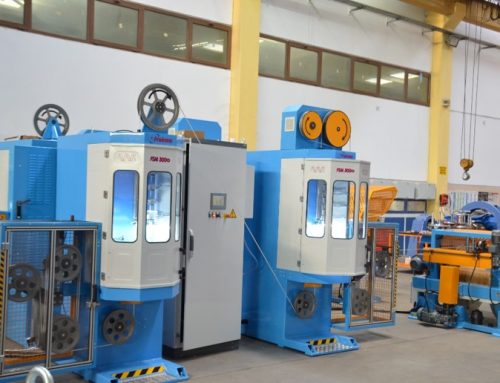Welcome back to the Cable Connoisseur’s Corner! Today, we’re diving deep into the exciting world of innovation, exploring the latest technological advancements transforming the landscape of cable manufacturing equipment.
Here are some key subheadings to explore these trends:
-
Embracing Automation for Enhanced Efficiency: We’ll discuss how advancements in robotics and industrial automation are streamlining cable production processes, optimizing workflows, and boosting overall output.
-
Precision Takes Center Stage: Laser Technology and Beyond: This section delves into the rising prominence of laser marking and cutting for superior cable marking and handling, ensuring accuracy and consistency in cable manufacturing.
-
The Rise of Smart Manufacturing: How AI is Revolutionizing Cable Production: We’ll explore how artificial intelligence is being integrated into cable manufacturing equipment, enabling predictive maintenance, real-time process optimization, and improved decision-making.
-
Catering to the Future: Cable Machinery for Emerging Technologies: This section focuses on how cable manufacturing equipment is adapting to meet the demands of next-generation applications, such as smart grids, electric vehicles, and high-speed data transmission.
-
Sustainability in the Spotlight: Eco-Friendly Equipment for a Greener Future: We’ll discuss how advancements in cable manufacturing equipment are promoting sustainability by minimizing waste, reducing energy consumption, and utilizing eco-friendly materials.
Stay tuned as we delve deeper into each of these subheadings, unpacking the specific technologies and their impact on the ever-evolving world of cable manufacturing equipment. We’ll also explore real-world examples and showcase how these trends are transforming the industry.
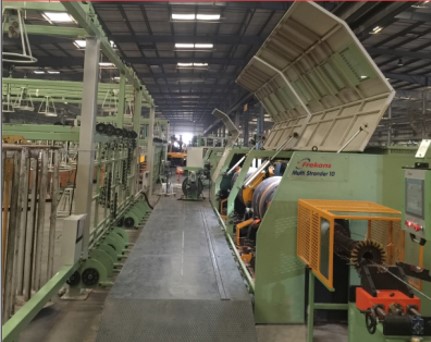
Central Stranding Armouring Line
Embracing Automation for Enhanced Efficiency: Streamlining Cable Manufacturing
In the fast-paced world of cable manufacturing, efficiency reigns supreme. Every second shaved off production time translates to increased output, reduced costs, and a more competitive edge. This is where the exciting realm of automation comes into play, transforming cable manufacturing from a labor-intensive process into a streamlined marvel of modern technology.
Robots on the Rise: The Power of Automation
Gone are the days of solely manual cable handling. Today, industrial robots have become a ubiquitous presence in cable manufacturing facilities. These tireless automatons can perform a wide range of tasks, from precisely loading and unloading cable spools to meticulously feeding wires into complex machines. Their programmable nature allows for intricate movements and consistent execution, eliminating human error and ensuring smooth production flow.
Beyond Brawn: The Intelligence Behind Automation
Modern automation extends far beyond robotic arms. Advanced control systems act as the brain behind this technological revolution. These systems, often coupled with human-machine interfaces (HMI) for intuitive operation, allow for real-time monitoring and precise control of various parameters. This includes factors like cable tension, conductor placement, and coiling speeds. By integrating these control systems with sensors and machine learning algorithms, manufacturers can achieve unparalleled levels of automation. Imagine an intelligent system that automatically adjusts coiling tension based on the specific cable type or detects potential malfunctions before they occur, preventing costly production delays.
The Symphony of Efficiency: Integration is Key
The true magic of automation lies not in individual machines, but in their seamless integration. Modern cable manufacturing facilities are increasingly adopting a holistic approach, where various automated systems work in concert. For instance, automated guided vehicles (AGVs) can autonomously transport spools between stations, further optimizing material flow. This interconnected network of technologies minimizes human intervention, reduces bottlenecks, and ultimately leads to a well-orchestrated production symphony.
The Human Touch: A Collaborative Future
While automation is revolutionizing cable manufacturing, it’s important to remember that it doesn’t spell the end of human involvement. Skilled personnel remain crucial for tasks like system programming, maintenance, and quality control. In this new paradigm, automation empowers humans to focus on higher-level functions, such as process optimization and strategic planning. The future belongs to a collaborative environment where humans and machines work together to achieve peak efficiency.
Investing in the Future: The Benefits of Automation
The adoption of automation in cable manufacturing offers a compelling array of benefits:
- Increased Production Rates: By automating repetitive tasks, manufacturers can significantly boost output and meet growing demands with greater agility.
- Enhanced Quality Control: Automation ensures consistent and precise execution, leading to cables that meet stringent quality standards with minimal human error.
- Reduced Labor Costs: While automation requires an initial investment, it can lead to significant cost savings in the long run by minimizing reliance on manual labor.
- Improved Safety: Automating hazardous tasks like heavy cable handling protects workers from potential injuries, fostering a safer work environment.
A Final Note: Embracing the Journey
The integration of automation presents an exciting opportunity for cable manufacturers to embrace a future of enhanced efficiency, quality, and competitiveness. While planning and investment are essential for successful implementation, the potential rewards are undeniable. As the cable manufacturing landscape continues to evolve, staying ahead of the curve by embracing automation will be key to securing a prominent position in the ever-changing marketplace.
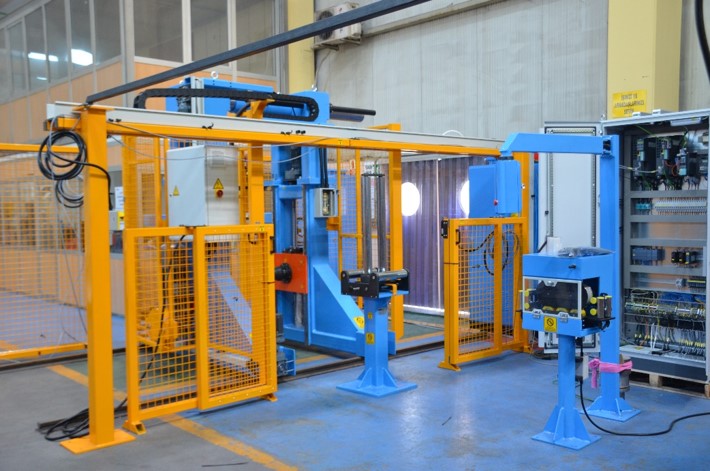
Precision Takes Center Stage: Laser Technology and Beyond in Cable Manufacturing
The age of “close enough” is over in cable manufacturing. Today’s high-performance applications demand cables with unparalleled precision and consistency. This is where laser technology steps into the spotlight, offering a game-changing solution for achieving the meticulous accuracy that modern cables require.
Sharper Than Ever: The Advantages of Laser Marking
Traditionally, cable identification relied on techniques like ink printing or hot stamping. While these methods served their purpose, they often resulted in smudging, fading, or uneven application, compromising the legibility and overall quality of cable markings. Enter laser marking, a revolutionary technology that utilizes a focused beam of light to etch permanent markings directly onto the cable jacket.
This innovative approach boasts a number of advantages:
- Unmatched Precision: Laser beams can be precisely controlled, allowing for the creation of incredibly small and intricate markings, including detailed text, logos, and even barcodes. This level of detail is crucial for high-density cables and applications where clear and concise identification is paramount.
- Durability Like No Other: Laser-etched markings are permanent and resistant to abrasion, chemicals, and extreme temperatures. Unlike traditional methods, they won’t fade or wear off over time, ensuring the cable’s vital identification information remains clear and legible throughout its lifespan.
- Enhanced Speed and Efficiency: Laser marking systems operate at high speeds, allowing for rapid and efficient application of markings onto cables of all sizes. This translates to faster production times and increased output for cable manufacturers.
- Versatility Across Materials: The beauty of laser technology lies in its adaptability. It can effectively mark a wide range of cable jacket materials, from traditional PVC to more exotic options like fluoropolymers and even some metals. This versatility makes it a true one-stop solution for cable identification needs.
Beyond Marking: Laser Cutting for Advanced Applications
The power of lasers extends beyond just marking. In cable manufacturing, laser cutting has emerged as a valuable tool for precise conductor and jacket manipulation. Here are some fascinating applications:
- Clean and Consistent Conductor Stripping: Lasers can be used to remove cable jackets with exceptional precision, leaving the underlying conductors perfectly exposed and ready for termination. This eliminates the risk of conductor damage often associated with traditional mechanical stripping methods.
- Intricate Jacket Slitting: For applications requiring mid-span access to conductors, laser cutting allows for clean and controlled jacket slits. This minimizes damage to the surrounding jacket material and ensures a reliable seal when the cable is reclosed.
- Advanced Cable Prototyping: The ability to precisely cut and modify cables with lasers makes them ideal for rapid prototyping in the development of new cable designs. This allows manufacturers to experiment with different configurations and quickly iterate on their designs.
Looking Ahead: A Future Focused on Precision
Laser technology is rapidly transforming the landscape of cable manufacturing. Its ability to deliver unparalleled precision, durability, and versatility makes it an indispensable tool for producing high-quality cables that meet the ever-increasing demands of modern applications. As the technology continues to advance, we can expect to see even more innovative applications of lasers emerge, further pushing the boundaries of what’s possible in cable manufacturing.
In the next section, we’ll delve into the exciting world of Artificial Intelligence (AI) and explore how it’s revolutionizing cable production processes!
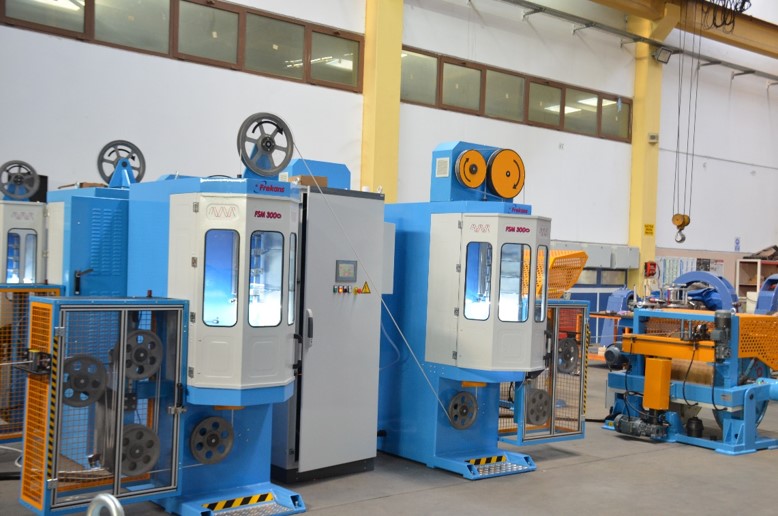
bantlama makinası fsm taping machine fsm
The Rise of Smart Manufacturing: How AI is Revolutionizing Cable Production
The concept of a “smart factory” has become a buzzword in recent years, and with good reason. Artificial intelligence (AI) is rapidly transforming the manufacturing landscape, and cable production is no exception. By integrating AI into cable manufacturing equipment, we’re witnessing a shift towards a more intelligent, data-driven, and ultimately more efficient production process.
From Reactive to Proactive: Predictive Maintenance
Imagine a world where cable manufacturing equipment can predict its own maintenance needs. This isn’t science fiction; it’s the reality facilitated by AI. By continuously monitoring various parameters like machine vibration, temperature, and power consumption, AI algorithms can identify subtle changes that might indicate potential equipment failure. This allows for proactive maintenance, preventing costly breakdowns and production downtime. Think of it as giving your machines a crystal ball – they can anticipate problems before they arise, ensuring smooth and uninterrupted operation.
Optimizing the Flow: Real-Time Process Control
AI doesn’t just predict the future, it also optimizes the present. AI-powered systems can analyze real-time data from various stages of the cable manufacturing process. This includes factors like cable tension, conductor placement, and coiling speeds. By analyzing this data and comparing it to historical trends and established quality control parameters, AI can make real-time adjustments to optimize production processes. Imagine a system that automatically adjusts coiling tension based on the specific cable type being produced, ensuring consistent quality throughout the entire run.
Learning on the Job: Machine Learning for Continuous Improvement
The beauty of AI lies in its ability to learn and adapt. Machine learning algorithms used in cable manufacturing equipment can analyze historical data and production outcomes. Over time, these algorithms become adept at identifying patterns and correlations, allowing them to continuously refine and improve the production process. This could involve anything from optimizing machine settings for specific cable types to identifying areas for increased efficiency. In essence, the machines themselves become intelligent students, constantly learning and evolving to deliver superior results.
Beyond Efficiency: AI and Quality Control
The impact of AI extends far beyond just optimizing production speed. AI-powered vision systems can be integrated into cable manufacturing equipment to perform real-time quality control inspections. These systems can meticulously examine cables for even the slightest defects, such as conductor misalignment, jacket imperfections, or inconsistencies in cable diameter. This automated approach ensures consistent quality and minimizes the risk of defective cables reaching the end user.
A Collaborative Future: Humans and AI as Partners
While AI is revolutionizing cable manufacturing, it’s important to remember that it’s not here to replace human workers. Instead, AI serves as a powerful tool that empowers human expertise. Skilled personnel remain crucial for tasks like system programming, data analysis, and interpreting the insights generated by AI. The future of cable manufacturing lies in collaboration, where humans and intelligent machines work together to achieve peak efficiency, superior quality, and unparalleled innovation.
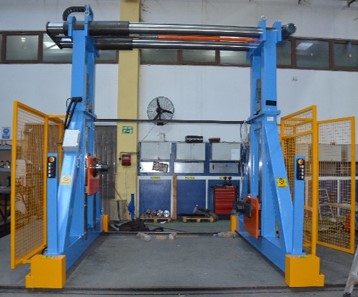
Catering to the Future: Cable Machinery for Emerging Technologies
The world of cable manufacturing is no stranger to constant evolution. As new technologies emerge and redefine our way of life, cable manufacturers need to adapt and innovate to meet the demands of the future. Here, we’ll explore how cable machinery is being specifically designed to cater to the unique needs of these cutting-edge applications.
Powering Up the Grid: Cables for Smart Grids
The traditional power grid is undergoing a significant transformation, giving rise to the concept of the “smart grid.” This intelligent network relies on two-way communication between utilities and consumers, enabling features like dynamic pricing, improved efficiency, and self-healing capabilities. To support this transformation, cable manufacturers need to produce cables with specific characteristics:
- High-Temperature Resistance: Smart grids often utilize underground cables that are exposed to higher temperatures. Cable machinery is being designed to produce cables with advanced insulation materials that can withstand these elevated temperatures without compromising performance.
- Enhanced Data Transmission Capabilities: Smart grids rely on real-time data exchange. New cable designs incorporate fiber optic strands alongside traditional power conductors, facilitating efficient data transmission within the grid. Cable machinery needs to be able to handle these hybrid cable constructions with precision and consistency.
Charging Ahead: Cables for Electric Vehicles (EVs)
The rise of electric vehicles (EVs) is presenting a unique set of challenges and opportunities for cable manufacturers. EV charging infrastructure requires cables that can handle high currents and voltages while remaining flexible and durable. Here’s how cable machinery is adapting to meet this demand:
- High-Voltage Cable Production: EV charging stations often utilize direct current (DC) at voltages exceeding 400V. Cable machinery is being developed to produce high-voltage cables with robust insulation systems that can safely handle these elevated voltage levels.
- Focus on Flexibility: EV charging cables need to be flexible enough to maneuver during charging without compromising their electrical integrity. New cable designs incorporate innovative conductor configurations and advanced jacketing materials to achieve this crucial balance.
A Glimpse into the Future: Embracing Change
The world of cable manufacturing is constantly evolving alongside the technologies it supports. By staying at the forefront of innovation and developing specialized cable machinery, manufacturers can ensure they are well-positioned to meet the demands of the future. Whether it’s supporting the development of smart grids, enabling the widespread adoption of EVs, or fueling the ever-increasing need for high-speed data transmission, cable machinery plays a critical role in shaping the technological landscape of tomorrow. The future is bright for cable manufacturers who embrace change and invest in the machinery that will allow them to produce the cables that will power a more connected and sustainable world.
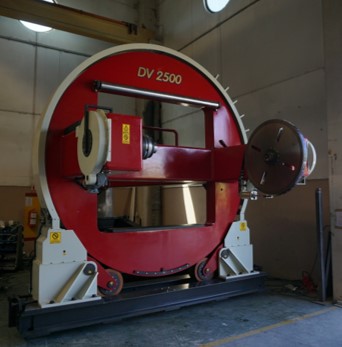
Building the Grid: Eco-Friendly Cable Machinery for Power Transmission Lines
The invisible arteries of our modern world, power transmission lines carry the lifeblood of electricity across vast distances. Ensuring the efficient and reliable delivery of this energy is paramount, and here’s where specialized cable production machinery comes into play. But in today’s environmentally conscious landscape, simply producing high-performance power cables isn’t enough. The focus is shifting towards utilizing cable production machinery that prioritizes eco-friendly practices without compromising on quality or performance.
Giants Made Efficient: Reducing the Footprint of Power Cable Production
High-voltage power cables are engineering marvels, often boasting complex multi-layer constructions that ensure safe and efficient transmission of electricity. However, their production can be resource-intensive. Here’s how cable machinery manufacturers are tackling this challenge:
- Minimizing Material Waste: Precision plays a vital role. Advanced cable machinery utilizes laser technology for conductor alignment and cutting, minimizing conductor waste during the stranding process. Similarly, coiling systems are designed for exceptional accuracy, reducing cable overruns and offcuts. Every inch of raw material counts, and these advancements ensure its efficient utilization.
- Closed-Loop Systems for Conductor Recycling: During the production of stranded conductors, a small percentage of scrap is generated. Innovative cable machinery incorporates closed-loop recycling systems. These systems capture and reintroduce these scraps back into the production line, significantly reducing the need for virgin materials and minimizing overall waste generation.
Energy Conservation: Powering Up with Efficiency
The production of power transmission cables can be energy-intensive. However, advancements in cable machinery are helping to reduce the environmental impact of this process:
- Smart Motors and Drives: The Power of Efficiency: Modern cable machinery is increasingly equipped with intelligent motor and drive systems. These systems can adjust energy consumption based on real-time production needs. Imagine a cable extrusion line that automatically optimizes motor power based on the specific cable diameter being produced, leading to significant reductions in overall energy usage.
- Heat Recovery Systems: Capturing Waste for a Sustainable Cycle: Certain cable manufacturing processes, like conductor annealing, generate significant amounts of waste heat. New cable machinery incorporates heat recovery systems that capture this wasted energy. This captured heat can then be re-used for other purposes within the production facility, such as preheating materials or powering auxiliary equipment. This closed-loop system promotes a more sustainable energy cycle within the cable production process.
Material Selection: Choosing the Right Path for Power Transmission
The materials used in power transmission cables play a crucial role in both performance and environmental impact. Here’s how cable machinery is adapting to accommodate sustainable material choices:
- Recycled Content Integration: The use of recycled materials in cable jacketing and other non-conductive components is becoming increasingly common. Cable machinery manufacturers are designing equipment that can handle these recycled materials seamlessly, ensuring their effective incorporation into the production process. This reduces reliance on virgin materials and promotes a more circular economy.
- Biodegradable Options for the Future: While still in its early stages, research is ongoing into the development of power transmission cables with biodegradable jacketing materials. Cable machinery manufacturers are closely following these advancements, ensuring their equipment can adapt to handle these innovative and eco-friendly materials when they become commercially viable.
A Shared Responsibility: Building a Sustainable Grid
The transition towards a more sustainable power grid requires a collaborative effort. Cable machinery manufacturers play a vital role by developing and offering eco-friendly equipment. However, power transmission line operators and cable producers also need to embrace these advancements and invest in sustainable technologies. Furthermore, industry collaboration is crucial for fostering innovation and sharing best practices in areas like material selection and responsible waste management.
Looking Ahead: Powering a Greener Future
By implementing these eco-friendly advancements in cable production machinery, the power transmission industry can significantly reduce its environmental impact. This includes minimizing waste generation, conserving energy, and utilizing sustainable materials. As the industry continues to embrace these practices, we can move towards a future where the invisible arteries of our world are not just efficient and reliable, but also environmentally responsible. In this way, cable machinery will play a key role in ensuring a more sustainable and interconnected future for generations to come.



